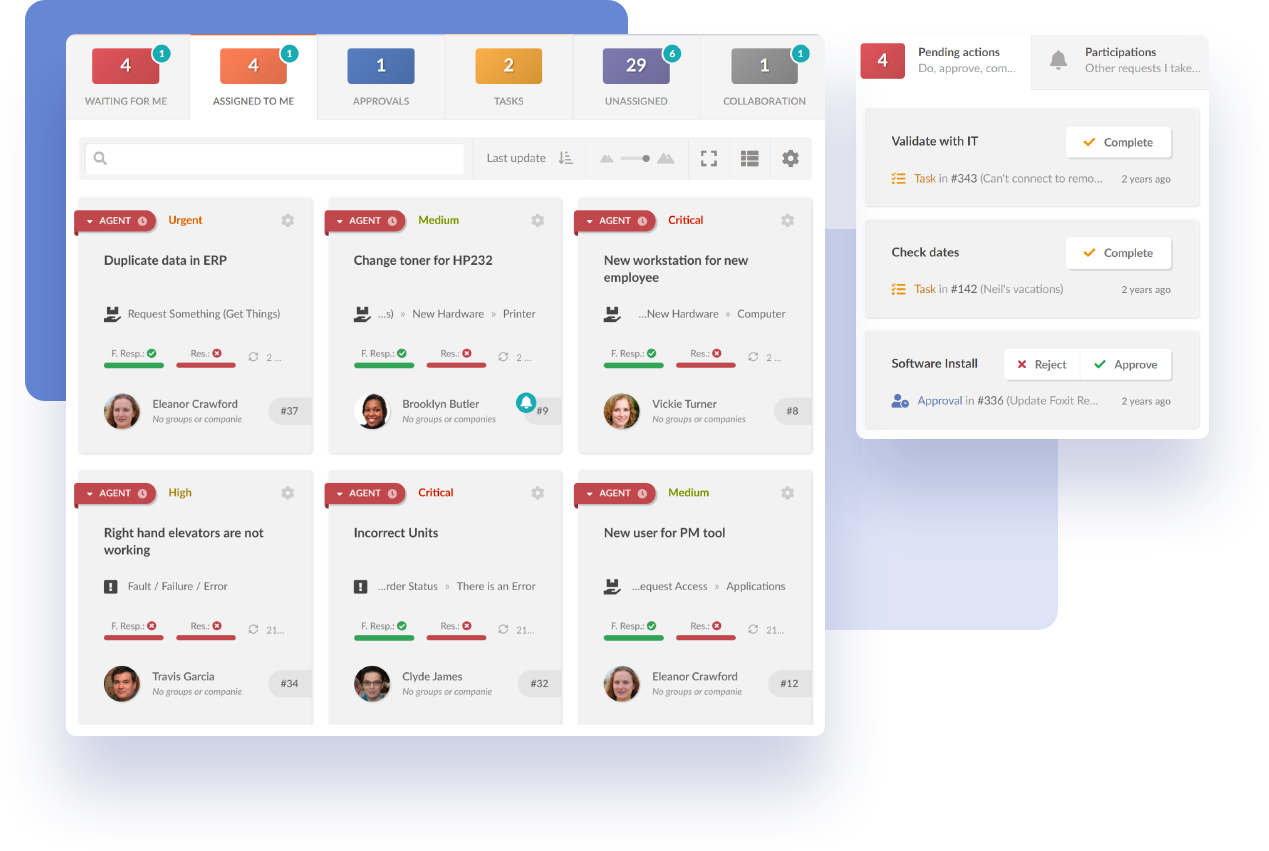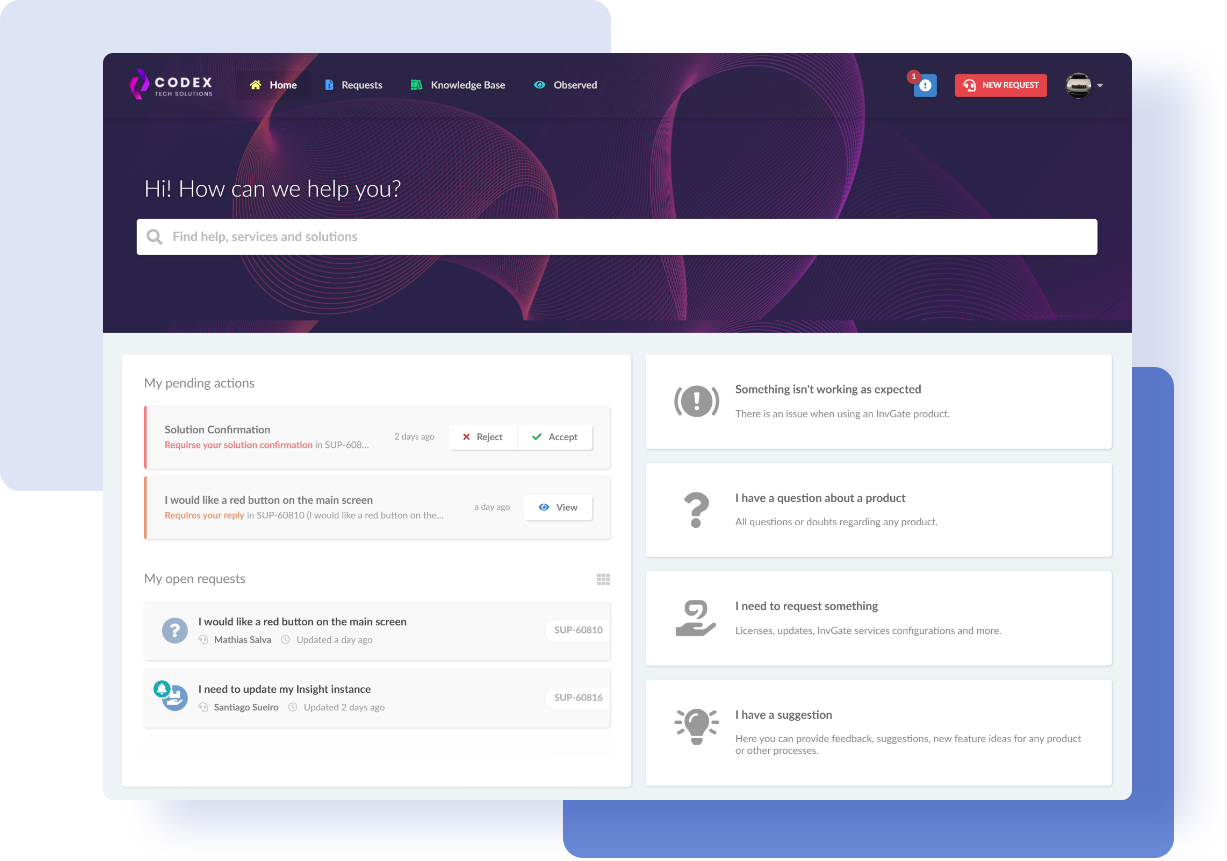Objectives and Key Results or OKRs are a popular goal management framework that helps organizations achieve goals by building specific and measurable actions as well as communicating and monitoring progress toward them.
Used effectively, an OKR framework can support increased transparency, better decision making, and better engagement with strategy by organizing colleagues and the work they do around achieving a common set of objectives.
Here we'll dive in and explain the methodology, as well as look at how to introduce ORKs to support your ITSM practices.
The basics
Let’s start with explaining the building blocks of OKRs. Here are the core concepts to understand:
- Objective aka “Where do I want to go?” An objective describes where you want to go and sets a clear direction.
- Key Result: aka “How do I know if I’m getting there?” A key result is a measurable outcome required to achieve the objective. It contains a metric with a start and target value.
- Initiative: “What will I do to get there?” An initiative describes what you’ll do to achieve your key results. Initiatives are all the plans, projects, and tasks that will help you achieve a key result.
- Check ins: “How are we all doing?” help you track accomplishments and upcoming plans
How to use them in real life
OKRs can be used to complement existing measurements like practice success factors and key performance indicators by giving them a more holistic view. One way to implement OKRs in real life is to add this statement to your core work practices:
I will [objective] as measured by [key result] by carrying out [initiatives].
Here are some ideas:
Objective
Make it relevant and supportive of your organization. Think of your objective as a statement of intent; something that sets out what you want your practice to achieve. By being clear and concise you set the tone for your practice and make your goals transparent to all. Some examples could include:
- Incident management: to resolve or mitigate all incidents as quickly as possible and with as little adverse business impact as possible and to ensure nothing is lost, ignored, or forgotten about.
- Request management; to fulfill service requests quickly and effectively.
- Change enablement: ensure all changes are deployed effectively, efficiently, and safely
- Problem management: to understand the root cause of incidents and resolve them to improve service quality.
Key results
Make sure your key results directly translate to the objectives mapped out in the previous step. Taking an example for incident management, build key results from the objective above which will start breaking down your critical deliverables into smaller chunks. Example results for incident management could include:
- Resolve incidents within the service level agreement (SLA)
- Ensure customer satisfaction is maintained at 90% or above
- Ensure that incidents are resolved within a certain number of assignments
- Reduce hierarchical incident escalations by 15%
- Reduce duplicate calls chasing the status of existing incidents by 20%
When defining your results, you’re documenting the factors that will support the desired outcome, the conditions needed to create that outcome as well as the assets and capabilities needed to achieve the stated goals and objectives. Make sure that all your results are directly transferable to their related objectives so you can see a clear line of progression. Having a logical sequence of deliverables ensures everyone knows what is expected of them.
Initiatives
The work that underpins the key results. Some examples of initiatives for incident management include:
- Review the incident form in your ITSM tool to ensure it is easy to use. Tools like InvGate Service Management have easy to configure incident forms as well as detailed, comprehensive agent ticket management views that allow for this.

- Create knowledge articles for the most frequently logged incidents
- Offer extra training for service desk technicians and offer shadowing sessions with other support teams to increase skill levels
- Create a self-service portal so end users can log, update, and keep track of their own incidents and requests. InvGate Service Management makes this easy, with fully customizable self-service portal to help you quickly and easily make adjustments.

Check ins
Communication is key to keeping things on track and the OKR framework suggests having weekly check in meetings. OKRs work best in a collaborative culture. Think about it, we always talk about the need for everyone to work towards a shared goal or set of objectives, but the reality can be hard to manage. People are busy and we all have day jobs and who wants yet another meeting? (No one, that’s who).
But stay with me. To work effectively, each team will work towards their own OKRs as a group and getting together on a weekly basis for a quick call or stand up will ensure their OKRs stay on track. The point of these meetings is to ensure regular exchange of information that will improve mutual understanding and build trust. These meetings should last no longer than 30 minutes and will ensure everyone gets a progress update and folks stay in sync.
What are the benefits?
By using OKRs in your service offering you’re making a clear commitment to quality because you’re building accountability into your goal setting, backing it up with solid objectives and key results. OKRs demonstrate commitment: commitment to your stakeholders and customers in terms of service quality and commitment to your people in terms of transparency and a more supportive work culture. Here are some of the benefits to including OKRs in your service approach:
- Agile; OKRs are typically set by month or quarter so that an organization can flex to respond to changing conditions.
- Supports transparency and alignment; OKRs are meant to be shared, creating a culture of openness throughout all levels so colleagues are focused on working together to achieve a common set of goals or objectives
- Encourages collaboration and teamwork. OKRs make it easy to understand how each person has a role to play in accomplishing an objective.
- Support for continual improvement. OKRs are all about continuous improvement and growth. By breaking down improvement objectives, into smaller, achievable key results, you’re more likely to accomplish them and build better services over time.















